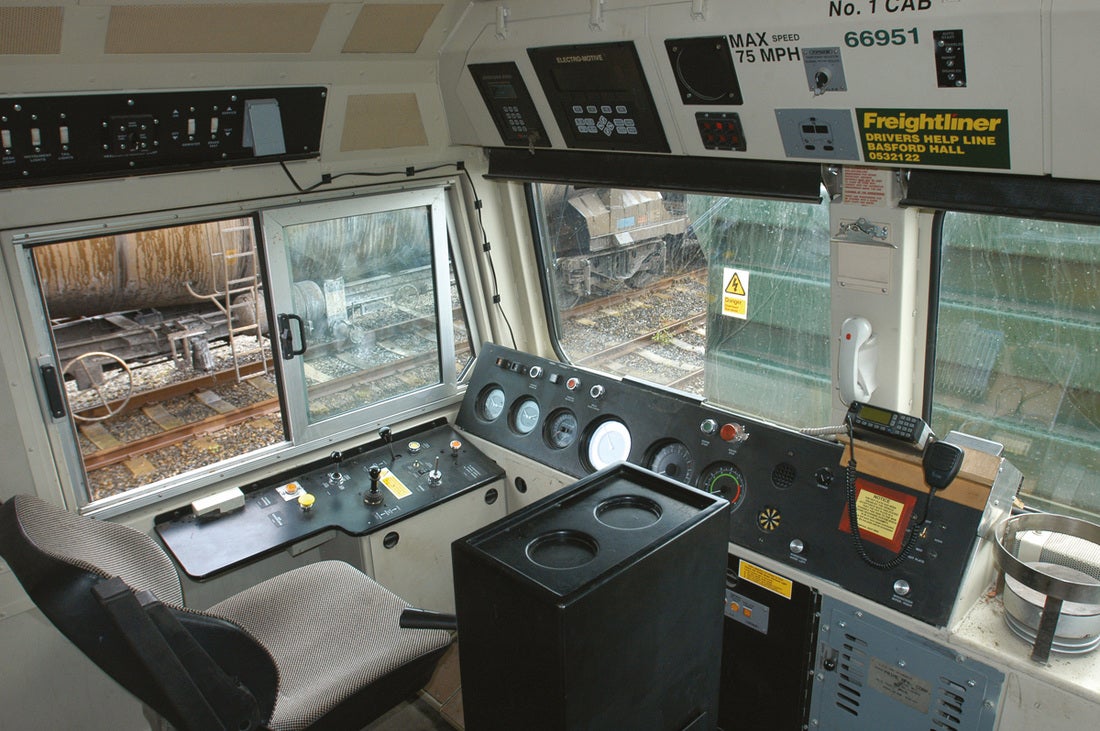 "Cé hé sin" (michael-m-mouse)
"Cé hé sin" (michael-m-mouse)
12/06/2016 at 18:06 • Filed to: Trainlopnik
 4
4
 6
6
 "Cé hé sin" (michael-m-mouse)
"Cé hé sin" (michael-m-mouse)
12/06/2016 at 18:06 • Filed to: Trainlopnik |  4 4
|  6 6 |
Road vehicles the world over tend to have the same basic controls. You find that the pedal on the left separates your engine from the wheels, the middle one slows you down and the right hand one speeds you up. In front of you is to be found a wheel and upon turning this you’ll go in the same direction as the top half of the wheel.
Consider for example the pedals of this Model T.

Actually, don’t.
!!!error: Indecipherable SUB-paragraph formatting!!!
All of this is splendid because you can get into a wholly unfamiliar vehicle and find that it won’t suddenly turn left when you expected to go right.
If you’re in an airgoing vehicle the same kind of thing applies. You find a control column or stick which takes you up, down, left and right in a logical manner and a pair of pedals of which the left one is of use in a left turn. Again, all well and good. You’re not going to run the risk of finding that the stick sends you to the ground when you pull it back.
Find yourself in a railgoing vehicle though and things get messy. All you can really do is go faster or slower so things must be simple. Yes? No, not necessarily.
Here we have one layout. A pair of brake levers to the right, a power controller to the left. Well and good so they must all be like that.

Except that this one is completely different.

As is this one from the London Underground. Just the one red lever which they haven’t bothered to label for us but forward is brake and back is power.

So Tube trains are all like that? No, not this one. You use your other hand.

Are there more? Of course there are. You’re French and might like a little table and to use your right hand for separate power and brake levers.

You’re French and want to use both hands? Voila. (forward/reverse, power/retarder, brakes). What the two brake levers do isn’t immediately obvious from the labels, whose literal translations don’t help me but logically they would be loco only and all brakes.

Like to sit right in the middle in a commanding position? Siemens has you covered. Just the one lever for fast and slow. This is a British spec train so you push for slow and pull for fast, counter intuitive though it might be. If however you’re using a Siemens train back home in Germany you do exactly the opposite. Could be exciting if you ever had to drive trains in two countries, but you won’t have to.

Want to sit in the middle but prefer power on the right and brakes on the left? Here we go. Two brake levers, because it’s a loco. One for the loco only, one for the entire train.

So there we have it. Standardisation is a good thing, but seemingly not on the rails.
 CB
> Cé hé sin
CB
> Cé hé sin
12/06/2016 at 18:10 |
|
“Who gives a shit, just give them levers and buttons wherever.”
-Everyone who has ever designed the inside of a train’s cockpit
 Berang
> Cé hé sin
Berang
> Cé hé sin
12/06/2016 at 18:30 |
|
The Model T’s control layout is pretty clever, if you keep in mind it was driven by people who’d never driven a car before.
Engaging the handbrake automatically pushes in the clutch, so nobody can accidentally drive off with the parking brake on. Forward and reverse are controlled by foot pedals so one can quickly change from forward to reverse without having to juggle the throttle and clutch pedals, making it easier to rock out of mud. Indeed you don’t ever use the clutch when changing gears, and there’s no true neutral, only the clutch, which you only use when stopping. It’s about as stupid-proof as it gets without using an automatic, which of course didn’t exist yet.
In some states (and apparently in Japan too) people got “planetary” licenses which were easier to obtain than normal driving licenses, and essentially only applied to Model T drivers, since planetary transmissions had disappeared from pretty much anything else by 1920. At the time sliding gear transmissions were either constant mesh, or unsynchronized, and cone clutches were common, so it took some skill to operate more sophisticated cars.
 Demon-Xanth knows how to operate a street.
> Berang
Demon-Xanth knows how to operate a street.
> Berang
12/06/2016 at 20:24 |
|
The model Ts controls also closely resemble tractor controls. Which people would have more likely been familiar with.
 Berang
> Demon-Xanth knows how to operate a street.
Berang
> Demon-Xanth knows how to operate a street.
12/06/2016 at 21:38 |
|
Tractors at the time were not as we know them today either.

 davesaddiction @ opposite-lock.com
> Cé hé sin
davesaddiction @ opposite-lock.com
> Cé hé sin
12/07/2016 at 13:31 |
|
See also: all of those newfangled automatic transmission gear selectors.
 DynamicWeight
> Cé hé sin
DynamicWeight
> Cé hé sin
12/07/2016 at 16:32 |
|

One standard I absolutely hate: a center mounted automatic transmission lever. I get that they exist because some cars have both an automatic and manual version. And I even get that by whining about it and having them move it that puts another nail in the manual coffin. But I don’t care. It is such a terrible waste of space. Column mount. Buttons on the dash. The little prius thing. ANYTHING IS BETTER. You use it twice a ride, it does not need to take up that much space in such a high demand and easy to access area.
Tiptronic functions should be on flappy paddles.